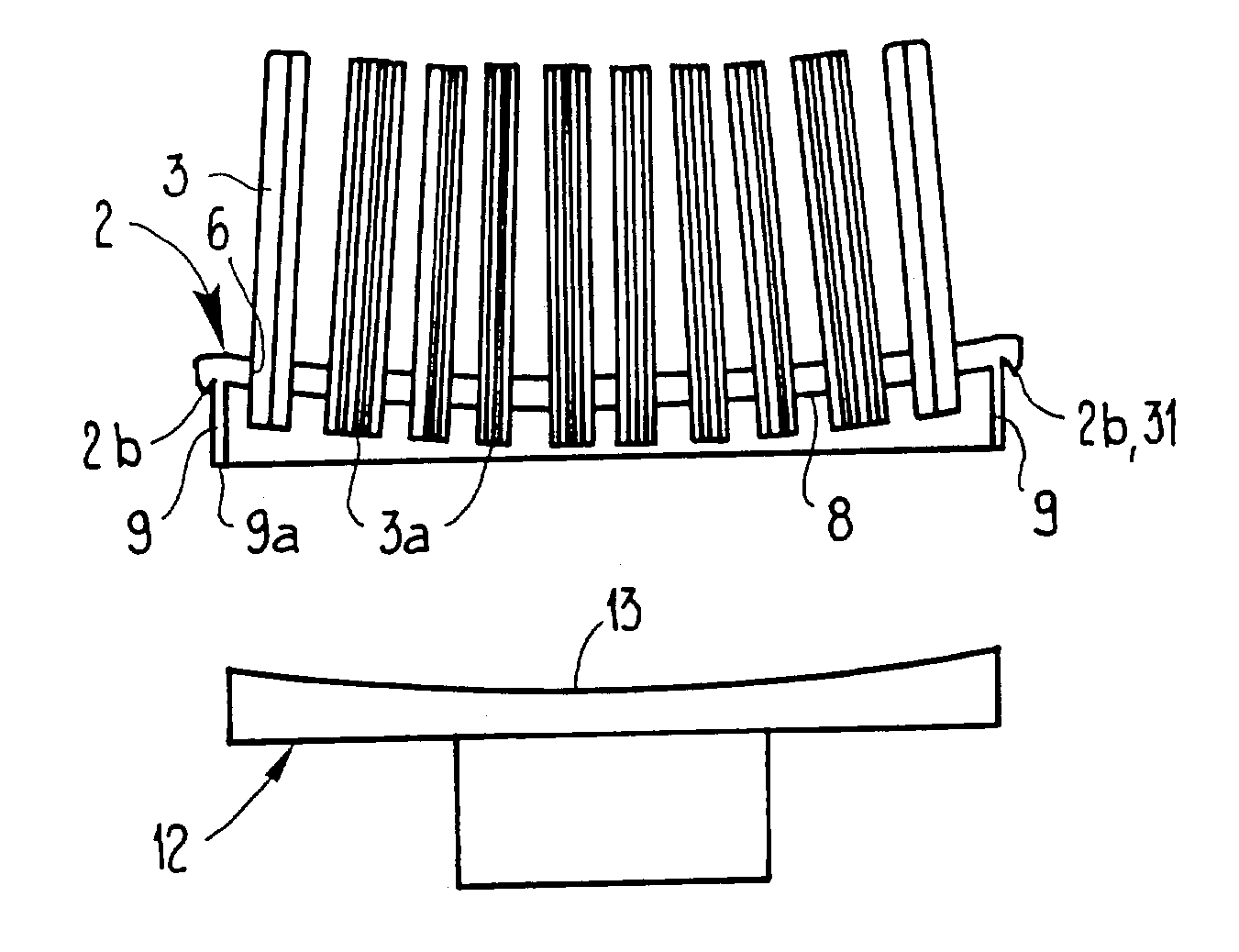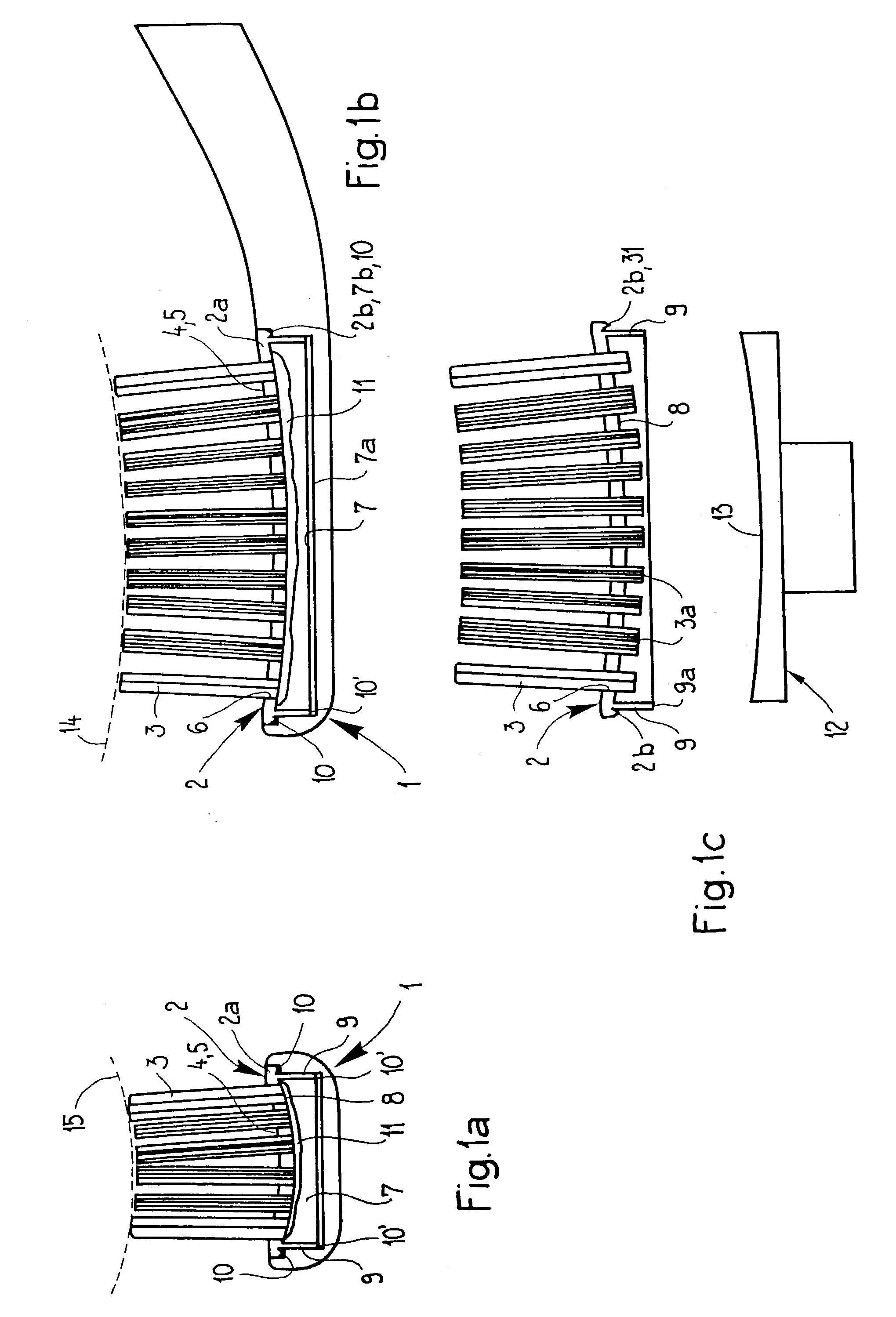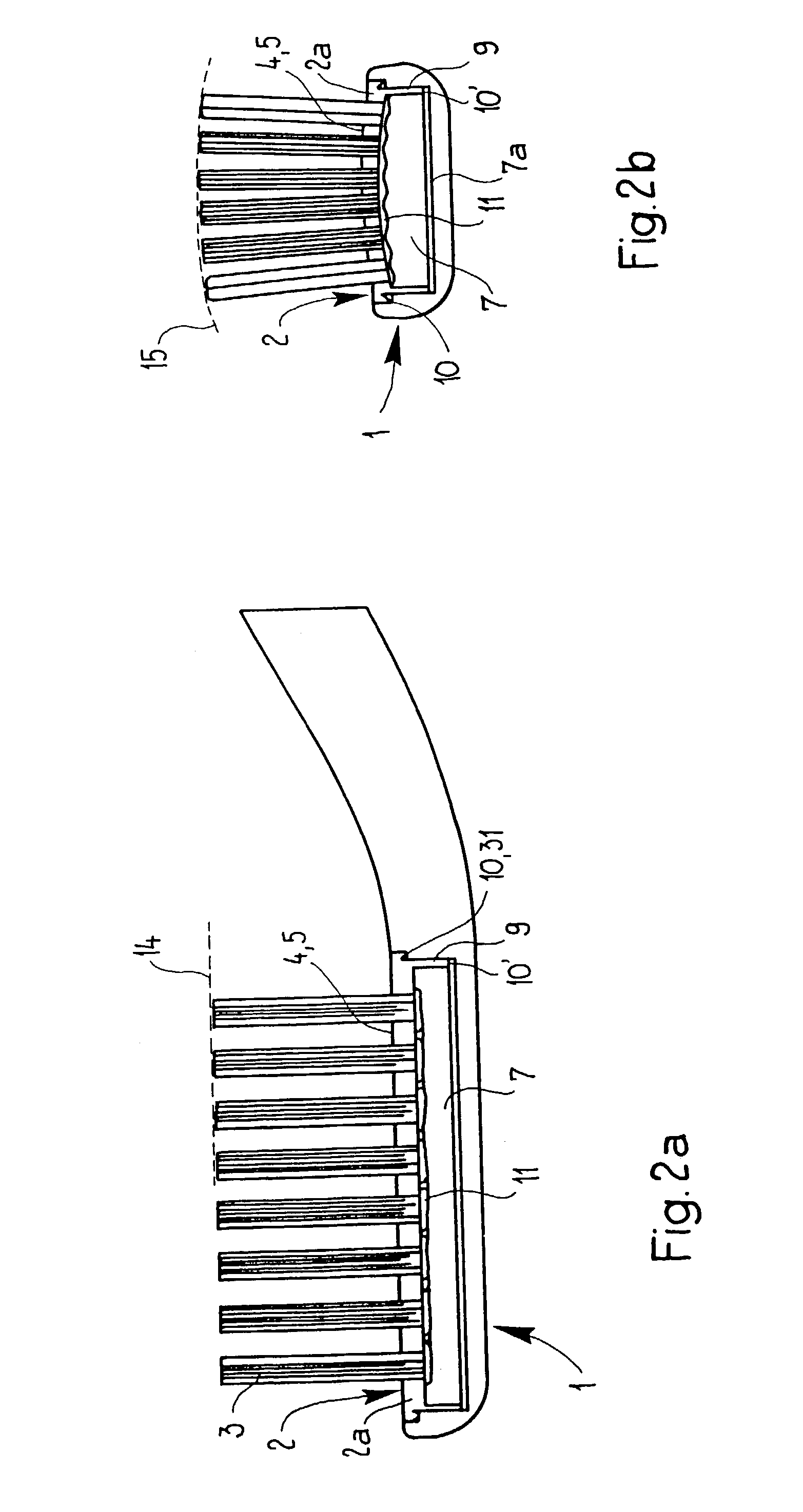Process for producing a toothbrush
a toothbrush and processing technology, applied in the field of toothbrushes, can solve the problems of inability to meet the needs of these parameters, and achieve the effect of improving cleaning performan
- Summary
- Abstract
- Description
- Claims
- Application Information
AI Technical Summary
Benefits of technology
Problems solved by technology
Method used
Image
Examples
Embodiment Construction
[0036]All of the toothbrushes shown in the figures have a handle part (not illustrated), a head part 1 and at least one carrier element 2 which is, or can be, connected thereto and has been covered with clusters of bristles 3 by AFT. According to the invention, the front surface 5 of the finished head part, said surface, in the cases with just one carrier element 2 (see FIGS. 1–4, 6–8, 10, 12–16), largely corresponding with the top surface 4 of the latter, has a non-planar configuration in the rest state and / or during use. It is arched inward, i.e., in the direction of the head part 1, in FIG. 1, arched outward in FIGS. 2, 12–14, 16, of undulating form in FIGS. 3 and 8, planar, but compliant, in FIG. 15, and provided with inflections or steps in the rest of the figures. By this means, and by corresponding selection of the bristle lengths, it is possible to produce bristles profiles 14, 15 which differ in the longitudinal and transverse directions in relation to the head part 1 and h...
PUM
| Property | Measurement | Unit |
|---|---|---|
| thickness | aaaaa | aaaaa |
| thickness | aaaaa | aaaaa |
| thickness | aaaaa | aaaaa |
Abstract
Description
Claims
Application Information
 Login to View More
Login to View More - R&D
- Intellectual Property
- Life Sciences
- Materials
- Tech Scout
- Unparalleled Data Quality
- Higher Quality Content
- 60% Fewer Hallucinations
Browse by: Latest US Patents, China's latest patents, Technical Efficacy Thesaurus, Application Domain, Technology Topic, Popular Technical Reports.
© 2025 PatSnap. All rights reserved.Legal|Privacy policy|Modern Slavery Act Transparency Statement|Sitemap|About US| Contact US: help@patsnap.com



